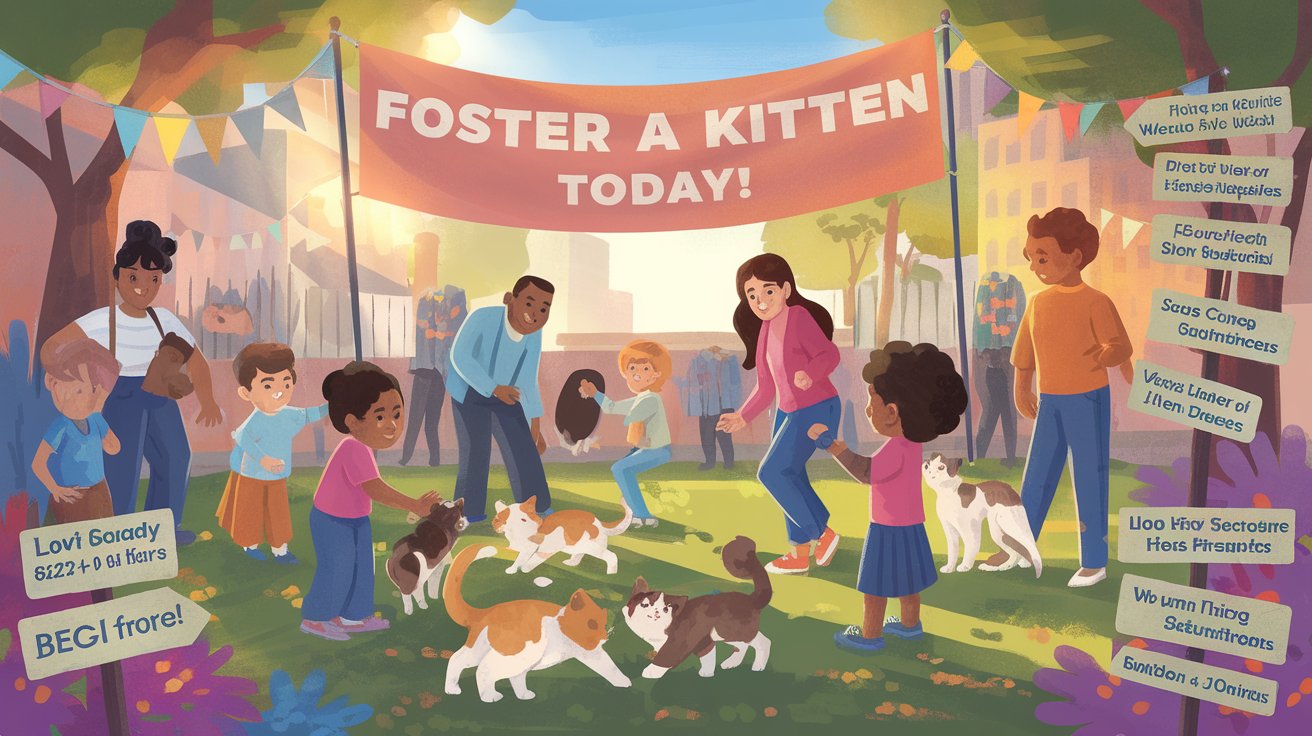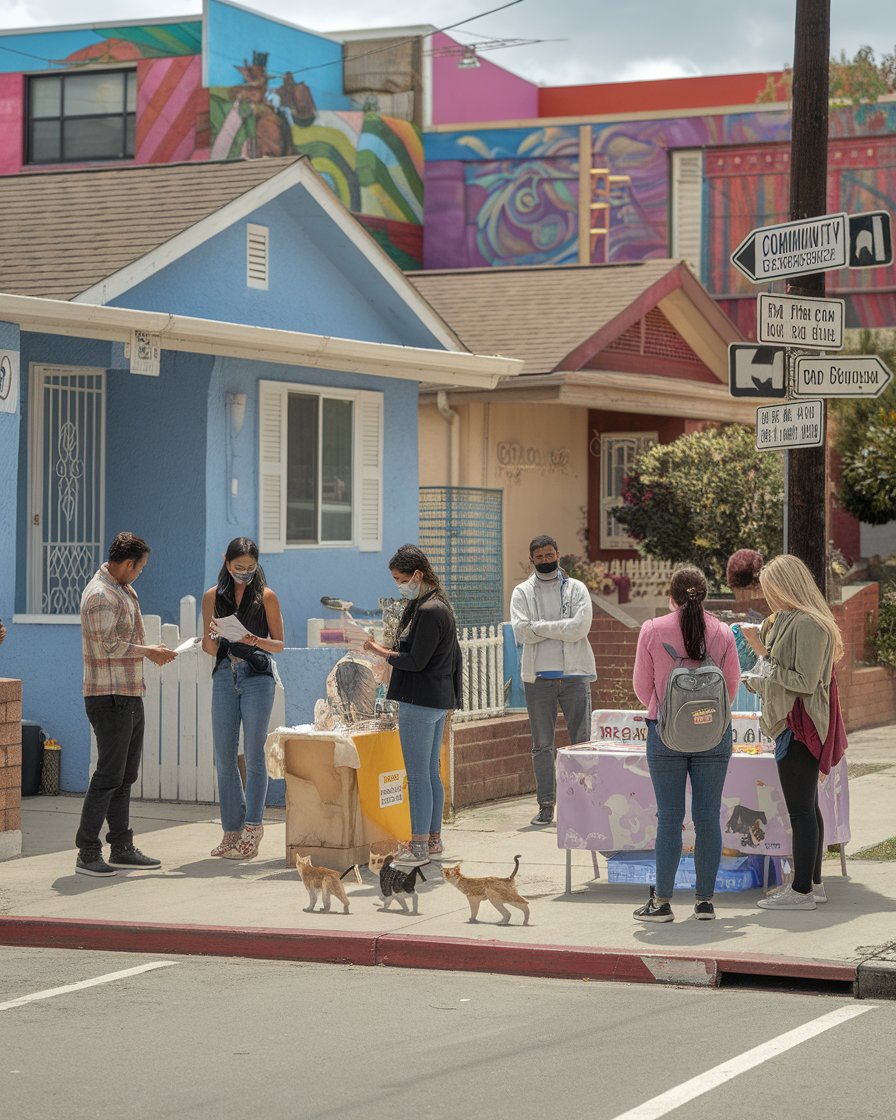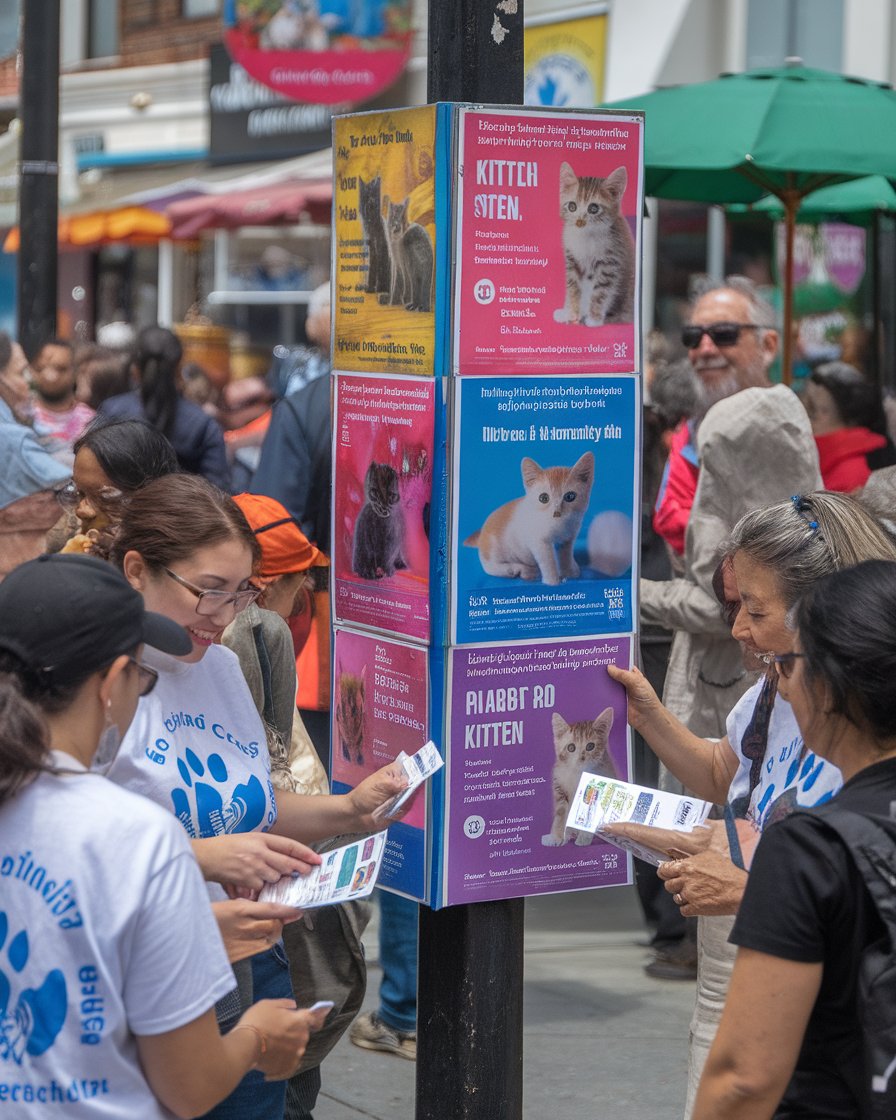Introduction
Kitten fostering programs in high-intake areas, such as Los Angeles County, face several challenges, particularly in communities with overpopulation issues. These areas often see a high rate of kitten shelter intake, putting pressure on local facilities. Engaging residents in kitten fostering can alleviate this burden, yet awareness of kitten fostering programs (KFPs) remains low. Understanding the barriers that prevent residents from participating in these programs is key to boosting engagement. Research conducted by animal welfare organizations like the ASPCA, represented by experts like Greg Miller, has provided valuable insights into strategies that may improve fostering outcomes.
By addressing knowledge gaps and cultural barriers, fostering programs can increase awareness among residents of high kitten intake areas. Offering clear information about the experiences of fostering kittens, such as the option to foster an adult cat or a litter of kittens, can encourage more community members to get involved. These efforts could improve engagement in fostering initiatives and help reduce shelter overcrowding.
Key Takeaways
- High-intake areas like Los Angeles County face significant kitten overpopulation challenges that strain local shelters.
- Barriers such as time, space, and cost prevent residents from engaging in kitten fostering programs.
- Raising awareness about kitten fostering programs can help overcome these barriers and boost participation among residents.
- Demographic and cultural differences affect the level of engagement, highlighting the need for targeted outreach.
- Fostering programs significantly reduce shelter overcrowding and improve animal welfare outcomes.
- Promotional efforts, particularly in multiple languages, are crucial for increasing community involvement in fostering initiatives.
Understanding High Kitten Intake Zip Codes
In LA County, certain zip codes experience a significantly higher intake of kittens into shelters. This influx creates challenges for both animal welfare organizations and the community, especially in areas of LA County where overpopulation issues are prevalent. These high-intake areas of LA County are often associated with barriers to participating in kitten fostering programs. By understanding the demographic and social factors contributing to the problem, animal care organizations such as the Association for Animal Welfare Advancement can develop strategies to increase engagement in kitten fostering programs. Programs among residents of areas with high kitten intake must focus on removing these barriers, promoting fostering kittens and actions taken by residents, and ultimately lowering shelter overcrowding. Greg Miller of the ASPCA and Debra Olmedo provide an overview of recent research aimed at boosting kitten fostering programs to residents in these areas and improving overall outcomes for kittens.
High Kitten Intake Zip Codes in Los Angeles: Increasing Engagement in Kitten Fostering Program
1. Understanding the Impact of High Kitten Intake Areas
High kitten intake zip codes in Los Angeles often correlate with overpopulation issues that strain animal shelters. These areas face unique challenges, such as overcrowded facilities and high mortality rates for kittens, making it essential for animal welfare organizations to understand the factors at play. By identifying these high-intake zones, animal care providers can target their efforts and develop tailored solutions to boost fostering participation among residents.
2. Demographics of Affected Areas
Research shows that many of the high-intake zip codes are predominantly Hispanic/Latinx communities, with residents aged 18 and older. These communities face barriers such as limited space, time constraints, and a lack of resources, making fostering difficult. However, with culturally relevant outreach and resources, fostering engagement can be improved. Understanding the specific needs of these demographics is key to designing inclusive kitten fostering programs.
3. Addressing Barriers to Participation
The most common barriers to fostering kittens in these areas include financial constraints, lack of awareness, and space limitations. Programs that provide financial support or flexible fostering options can alleviate some of these challenges. Additionally, increasing awareness through community events and targeted campaigns in these zip codes will help inform residents about fostering opportunities and foster care benefits.
4. Importance of Community Engagement
Engaging the community is crucial in solving kitten overpopulation in high-intake areas. Residents who participate in fostering not only provide much-needed care for kittens but also reduce shelter overcrowding. Local organizations such as the ASPCA and the Association for Animal Welfare Advancement can play an active role in community engagement by holding educational workshops, fostering events, and outreach programs that resonate with the local culture.
5. Culturally Relevant Outreach and Education
Effective outreach in high kitten intake zip codes requires a culturally relevant approach. Providing bilingual resources and advertising fostering programs through channels that resonate with Hispanic/Latinx communities will likely improve participation. Animal welfare organizations should also collaborate with local community leaders to spread awareness and promote the benefits of fostering kittens.
6. Long-Term Solutions for Overpopulation
Increasing engagement in kitten fostering programs can lead to long-term solutions for shelter overcrowding. By building sustainable partnerships between shelters, residents, and fostering networks, more kittens will have a better chance of survival and adoption. Developing strong ties within high kitten intake communities can create a more supportive environment for fostering, ensuring better outcomes for both kittens and shelters in Los Angeles.
Demographic Profile of Affected Areas
Research in high kitten intake zip codes revealed a distinct demographic profile. Many of these areas consist predominantly of Hispanic/Latinx adults aged 18 and older. These residents often have limited resources or face obstacles, such as time constraints or lack of space, that hinder their ability to foster kittens. Despite these challenges, studies show that community engagement in fostering can increase with targeted awareness campaigns. By addressing the specific needs of these residents, fostering programs can be more inclusive and effective, ensuring that more kittens are placed in loving homes rather than shelters.
Rates of Kitten Overpopulation in Los Angeles
Kitten overpopulation poses a severe issue in high-intake zip codes, contributing to shelter overcrowding and high mortality rates among young cats. The intake rates of kittens in these areas can reach as high as 40%, putting immense pressure on local shelters. To counteract this, fostering programs are essential, as they allow kittens to grow in safer environments. Recent research aimed at identifying ways to increase awareness of kitten fostering programs (KFPs) among residents shows that fostering partnerships between individuals and organizations can improve outcomes. By overcoming barriers like cost and space, fostering programs can dramatically reduce shelter populations and improve kitten survival rates.
Barriers to Fostering in High Intake Communities
Fostering kittens in intake zip codes in Los Angeles faces several challenges that hinder participation. These codes in Los Angeles County, often characterized by overpopulation issues, see a significant intake of kittens to animal shelters. Many cats by residents living in high-intake areas are eager to help but encounter barriers that prevent them from fostering. High-intake areas, like parts of Los Angeles County, experience lower engagement in fostering programs due to concerns such as time commitment, cost, and limited space. Additionally, kitten fostering programs potentially differ for residents in these areas based on cultural and socio-economic factors, making it essential to address these barriers and increase awareness of kfps and kitten fostering among residents to promote animal welfare. Debra Olmedo and Greg Miller have learned about awareness strategies and discuss the project methodology to improve fostering outcomes.
Case Study: Overcoming Barriers to Kitten Fostering in Los Angeles’ High-Intake Areas
A study conducted by the ASPCA in 2021 focused on fostering challenges in high-intake zip codes in Los Angeles, particularly in communities with overpopulation issues. The research identified significant barriers, including time commitment, costs, and space limitations, as key reasons for low engagement in fostering programs. These factors were especially prominent in Hispanic/Latinx communities where fostering programs potentially differ due to socio-economic constraints.
To address these barriers, the ASPCA developed a targeted outreach strategy involving bilingual resources and culturally relevant messaging. This approach increased awareness of kitten fostering programs and offered flexible fostering options, such as fostering up to two kittens at a time or fostering an adult cat. The program provided financial support to cover fostering-related costs, helping reduce the burden on residents. Over 60% of participants in the pilot program reported a positive experience with fostering, leading to increased engagement and a reduction in kitten intake at local shelters.
Common Concerns Among Potential Fosterers
Potential fosterers in high intake communities often share common concerns, such as the time, space, and costs required to foster kittens. Research revealed that 79% of participants worried about the time commitment, while 78% cited costs as a major hurdle. Space constraints also proved to be a significant factor, with 77% expressing concerns about their ability to provide a proper environment for fostering. Despite their desire to help, these barriers limit the engagement of residents in kitten fostering programs. To overcome this, strategies that provide support for costs, flexible time commitments, and education about fostering can help increase awareness and engagement in kitten fostering efforts, particularly in high intake areas.
Language and Cultural Differences
Language and cultural differences present another obstacle to fostering in high kitten intake communities. For example, Spanish-speaking participants reported less exposure to fostering program advertisements and initiatives, leading to lower participation rates. These residents, who may be otherwise willing to foster, often face a gap in communication from animal welfare organizations. This highlights the need for targeted outreach using culturally relevant messaging in languages that resonate with local communities. By addressing these differences, fostering programs can better connect with residents of high intake zip codes, potentially increasing participation and reducing shelter overcrowding.
Community Awareness of Kitten Fostering Programs
Community awareness plays a crucial role in the success of kitten fostering programs, particularly for residents living in high kitten intake areas. In many communities, fostering programs remain underutilized due to a lack of information reaching potential fosterers. Increasing strategies to increase awareness and engagement in kitten fostering is essential to reducing the number of kittens entering shelters and ensuring they are cared for in safe environments. Despite having an interest in fostering kittens, many residents living in high kitten intake areas are unaware of available opportunities. This gap in communication limits the potential for higher engagement, especially in areas like Los Angeles County, where fostering programs can make a significant difference. Organizations such as the American Society for the Prevention of Cruelty to Animals (ASPCA) are leading strategy and research efforts to close this gap and improve experiences with fostering kittens.
Current Levels of Awareness Among Residents
Studies show that the current awareness levels of kitten fostering programs among residents are relatively low. Many participants expressed that they had not seen any information or advertising related to fostering kittens, which prevents them from taking action. This lack of exposure is particularly problematic in zip codes with high kitten intake rates, where fostering programs could alleviate overpopulation and shelter overcrowding. Increasing visibility through community events, flyers, and social media campaigns is vital to educating residents about fostering options. By focusing on awareness-building initiatives, areas with high intake rates could see greater participation, helping more kittens find temporary homes and reducing the burden on local shelters.
Impact of Promotional Materials and Advertising
Promotional materials and advertising play a significant role in encouraging residents to participate in kitten fostering programs. Research indicates that targeted advertisements through channels like email, social media, and text messages are most effective at reaching potential fosterers. Tailoring these communications to the cultural and linguistic needs of the community can further improve engagement. For instance, providing materials in both English and Spanish could bridge the language gap, making fostering opportunities more accessible to a broader audience. Animal welfare organizations, such as the ASPCA, can collaborate with local groups to craft promotional strategies that resonate with specific communities, ultimately boosting participation and helping to reduce the high rates of kitten intake in shelters.
“Alone, we can do so little; together, we can do so much.” – Helen Keller
Benefits of Engaging the Community in Kitten Fostering
Engaging the community in kitten fostering programs offers numerous advantages for animal welfare organizations and the community itself. By involving more residents in fostering initiatives, shelters can address the challenges of kitten overpopulation and high intake rates, particularly in areas like Los Angeles County. Fostering not only provides kittens with safe, nurturing environments, but it also reduces the strain on local shelters. With increased community involvement, kittens are more likely to receive personalized care, which is essential for their growth and development. This approach helps to create healthier, more adoptable kittens and improves the overall well-being of animals in high-intake areas.
Improved Animal Welfare Outcomes
One of the most significant benefits of community engagement in fostering programs is the improvement in animal welfare outcomes. When residents foster kittens, it reduces the stress these animals would otherwise face in overcrowded shelter environments. Foster homes offer personalized care, allowing kittens to receive the attention and socialization they need for proper development. This increased level of care directly impacts their health, reducing the risks of illness and ensuring that they are better prepared for adoption. Programs that increase engagement in kitten fostering contribute to healthier animals and help shelters more effectively manage the high intake of kittens, ultimately benefiting the entire community.
Reducing Shelter Overcrowding
Shelter overcrowding is a common issue in high kitten intake areas, and fostering offers a viable solution. By encouraging community members to participate in kitten fostering programs, shelters can free up space to accommodate more animals in need. This not only reduces the burden on shelters but also decreases the likelihood of euthanasia due to lack of space. When more residents take on the responsibility of fostering, it creates a support system that extends beyond shelter walls. The result is a more efficient system for managing kitten intake and ensuring better outcomes for both the kittens and the shelters that care for them.
Conclusion
Kitten fostering programs in high-intake areas like Los Angeles County offer a vital solution to the challenges of kitten overpopulation. By fostering, residents can reduce shelter overcrowding and provide kittens with the nurturing environments they need for proper development. However, barriers such as time, space, and cost limit engagement in these programs. Research conducted by the ASPCA and experts like Greg Miller highlights the importance of addressing these obstacles to increase participation.
Through targeted outreach and awareness campaigns, fostering programs can potentially differ for residents in various zip codes. Encouraging community involvement and addressing cultural and language differences can significantly boost engagement. Animal welfare organizations must focus on removing these barriers, promoting the value of fostering, and ensuring that more kittens are placed in loving foster homes. Ultimately, these actions taken for cats can improve overall animal welfare and reduce the strain on shelters across high-intake areas.












